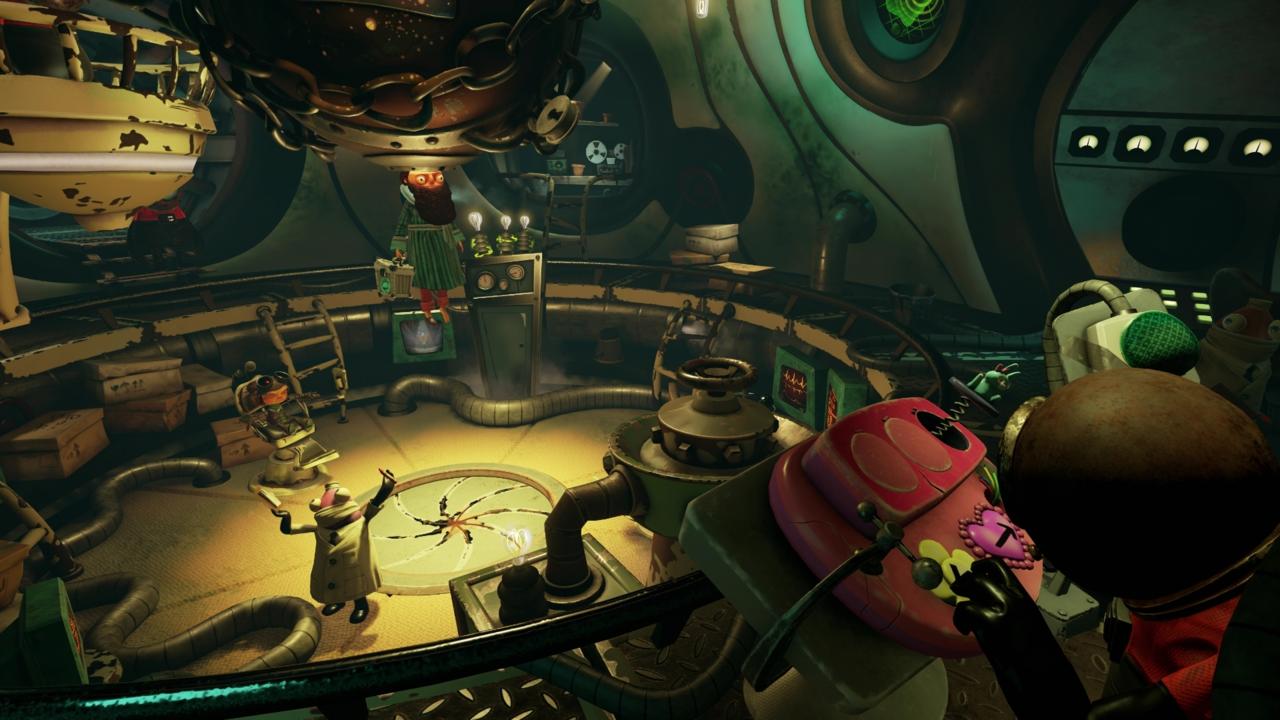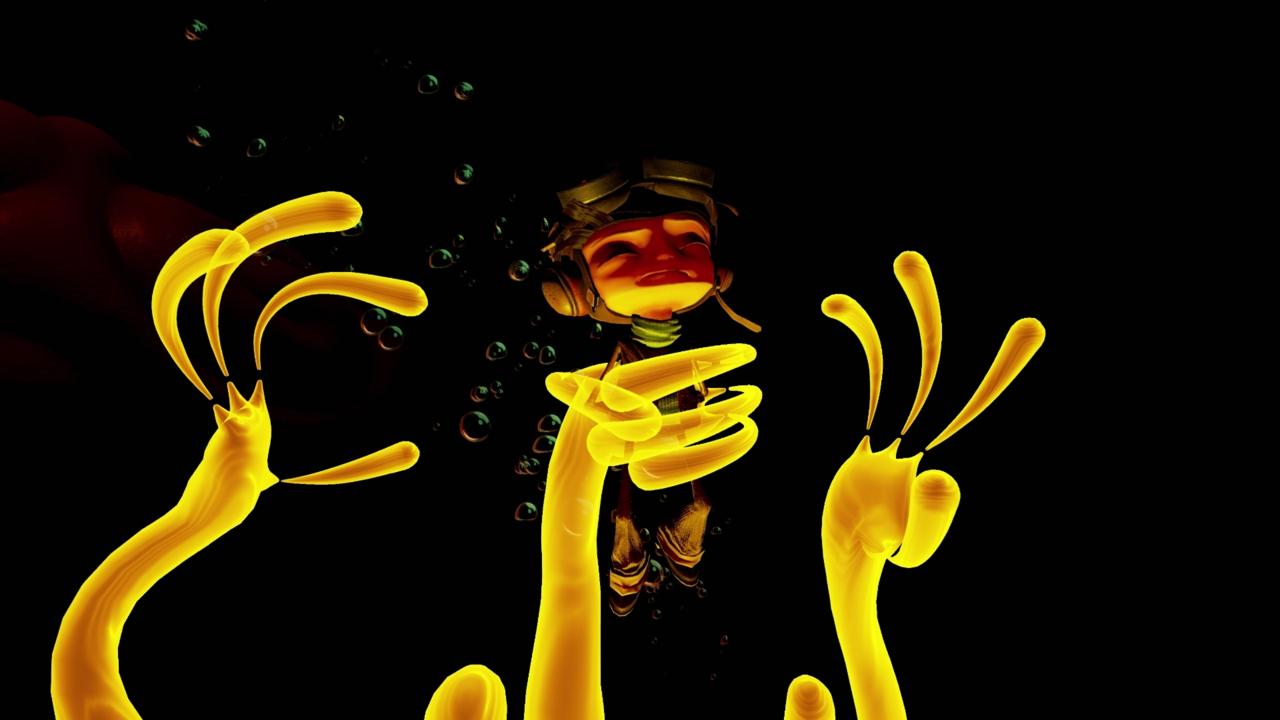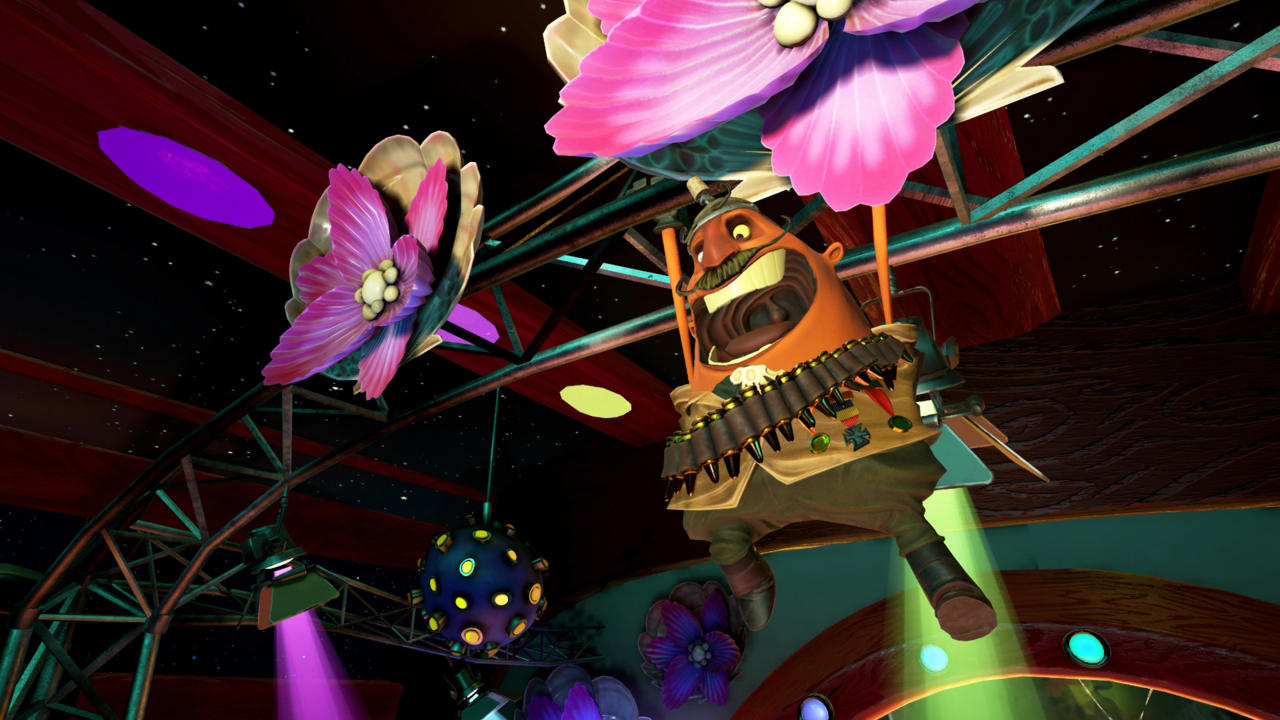If there’s one common thread that unites Tim Schafer’s extensive catalogue of creations, it’s charm. From Monkey Island to Broken Age, Schafer’s writing never fails to imbue his games with cheeky humor and subtle humanity. It’s no doubt partially responsible for the enduring (if niche) success of the original Psychonauts, an inventive platformer that lets you run around inside the minds of its characters. Naturally, that same charm permeates Schafer and Double Fine Productions’ latest game, the PlayStation VR-exclusive Psychonauts in the Rhombus of Ruin.
While fans will find a familiar cast of characters, Rhombus of Ruin actually plays more like an adventure game than a platformer. You’ll spend most of the game glancing around environments from various fixed positions in search of clues and points of interaction that can help you solve puzzles. It’s a natural evolution of the point-and-click pixel hunting of classic adventure games, one that embraces the uniquely immersive qualities of VR. But there are, unfortunately, a few problems: at a painfully short two hours long, the campaign ends just as it starts to hit its stride, and many of its puzzle are disappointingly simplistic.

Even the story, charming though it may be, ends up feeling insubstantial. The entire narrative revolves around a single short-lived mission: player protagonist Raz--a bright-eyed new member of the eponymous psychic spy outfit--and his fellow Psychonauts Sasha, Lili, Milla, and Coach Oleander must rescue the kidnapped head of their organization (and Lili’s dad) Truman Zannotto. On your way to his location, your plane crashes into the Bermuda Triangle-esque Rhombus of Ruin and your crew is captured, leaving you to rescue them one by one.
Though more than a decade has passed since the original game released, the characters feel instantly familiar and authentic. As a longtime fan, I found it fun just interacting with them up close and hearing the original voice actors deliver new dialogue. It was like rediscovering an old favorite cartoon. That said, I don’t think you necessarily have to be a fan to appreciate the tone and humor Rhombus of Ruin. It’d be tough for anyone not laugh at a self-consciously cheesy joke that puns “carrion” with “carry-on” or smile at Raz’s endearing insecurity in the face of his budding romantic relationship with Lili.

Beyond these enjoyable yet superficial interactions, however, there’s not much substance to the plot. Basically the game starts, your plane crashes, you swiftly rescue everyone, you confront the main villain, and then the game just kind of ends, all within the span of two hours. There’s no narrative arc to speak of, and while you do learn who captured Truman, the game never really gets into how or even why he was kidnapped. At one point, you actually dive deep into the villain’s mind to see what makes him tick, but it’s just a brief section. I really wish there’d been more opportunities like that, but aside from the evil mastermind, all the bad guys are doofy-looking anthropomorphic fish, who, while amusingly clueless, don’t have much of a psyche to explore.
The story setup also has material repercussions on the mechanics. Each comrade you rescue grants you a new psychic ability, so until you save them all, your means of interacting with the world are somewhat limited. Though you eventually end up with telekinesis, pyrokinesis, and psi blast, you’ll spend most of the game simply prodding buttons with psi poke and, more importantly, hijacking the minds of the game’s many minions using clairvoyance. Raz actually spends the majority of Rhombus of Ruin strapped to a chair, so he can only “move” through the world by looking at an enemy, zapping himself into that enemy’s brain, then psychically interacting with whatever they (and by extension, you) see.
This ever-extending daisy chain of new perspectives is an exceptionally clever justification for keeping players seated while playing, thereby avoiding motion sickness. It also allows for some unique puzzles. In an early area, for example, you must enter a secret code into a hilariously childlike computer in order to open a window. Once you spot the code written down way across the room, you must poke a button to move a platform into the proper position, then hijack the mind of the guard on that platform in order to read the code up close. It’s a short but reasonably satisfying version of a classic adventure gaming trope, and it takes advantage of Psychonauts’ distinctive mechanics.
Problem is, puzzles rarely grow more sophisticated than that. Some are even simpler. In fact, you’ll spend a fair amount of time just hopping from jellyfish to jellyfish as you make your way to the next imperiled Psychonaut. I enjoyed the immersive, underwater views of sunken ships and mangled airplanes, but I would have preferred a few more challenging puzzles instead (or in addition). In fairness, a couple puzzles definitely tripped me up--one tricky section in particular confronted me with a multi-step problem that took several minutes to solve. But even then, I wasn’t uncontrollably delighted by how clever the solution was once I figured it out. And outside of those few occasions, I was generally able to simply poke around until a solution slapped me in the face.

Rhombus of Ruin adopts a smart approach to VR and executes it with humor and confidence. But it could have been longer and deeper, more challenging and surprising. Like the story, the gameplay is superficially enjoyable but barely has time to develop, and because you’ll know all the puzzle solutions by the end, the campaign doesn’t offer much replay value. If you’re content with a light snack, Rhombus of Ruin may be enough to tide you over until Psychonauts 2 because indeed, its world and characters remain utterly charming. I only wish we’d had more to do in our brief time together.